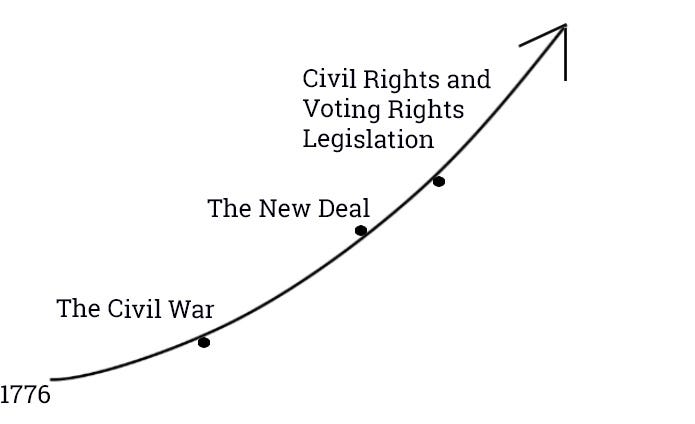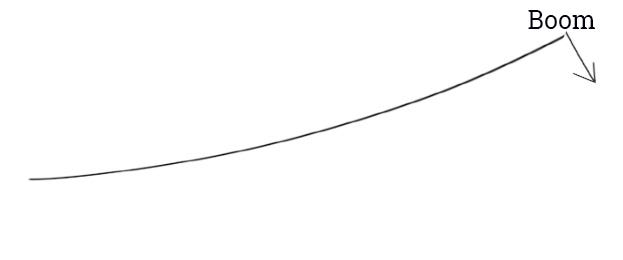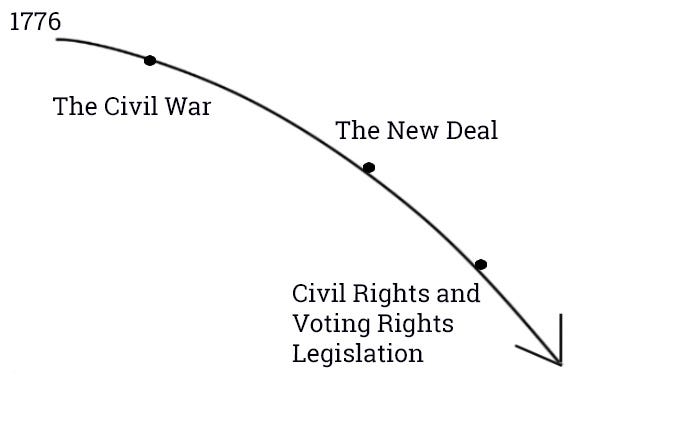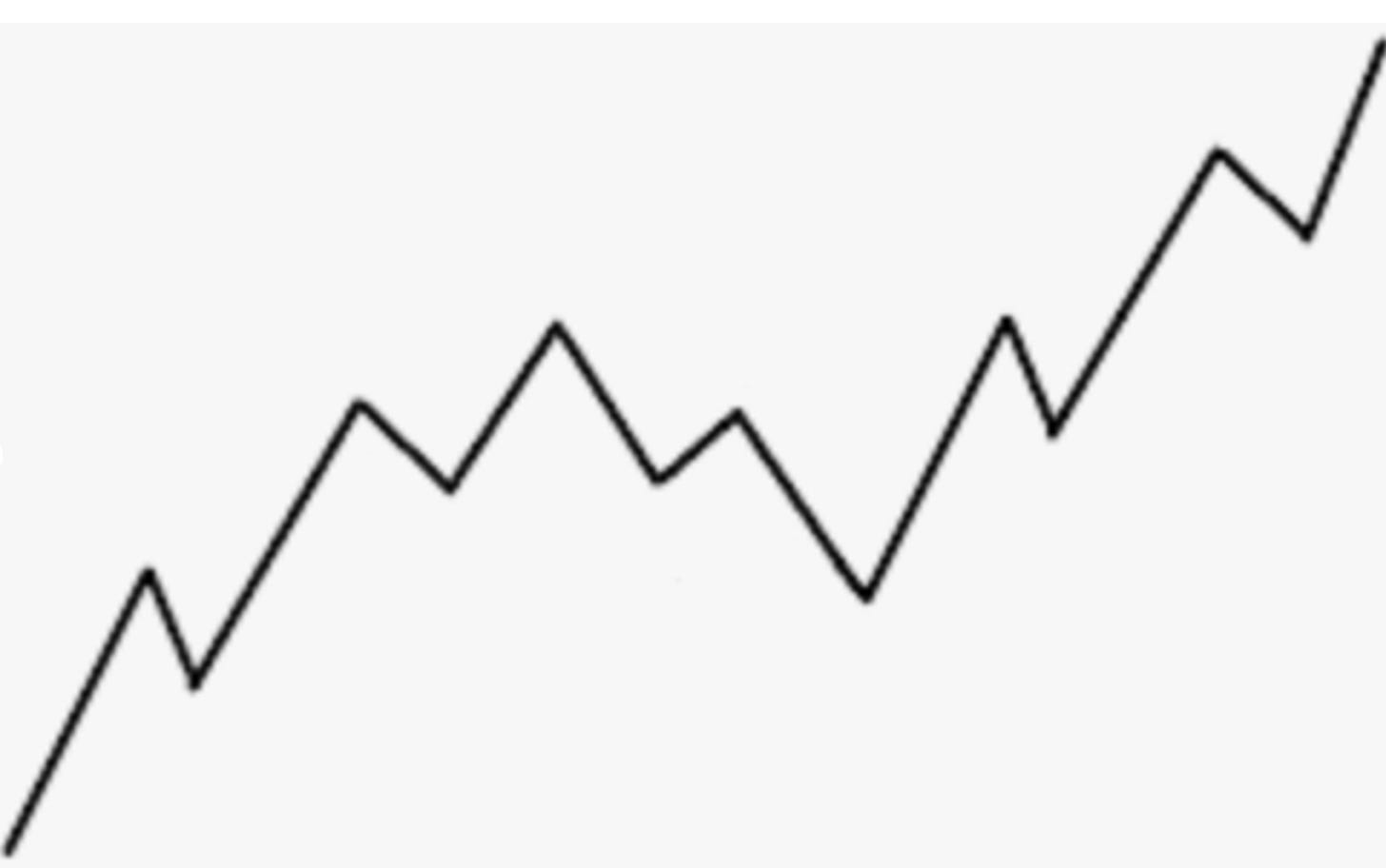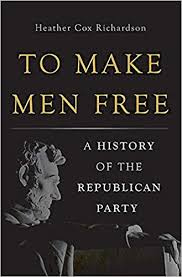I. The Progressive or Liberal View
Correct. A good way to understand today’s politics is by considering the different views of American history.
The liberal, or progressive view, can be visualized as an upward slope.
According to this view, the founders started with some pretty good ideas: The idea of a government based on rule of law instead of the whim of a king. The idea of an independent judiciary.
A government that represents “we the people.”
The problem was that they left out a lot of people.
In fact, they included only white, well-educated, mostly landowning men.
But as we’ve moved forward we have expanded who is included in the “we the people,” and as we did so, we’ve moved closer to the founding ideals.
Some highlights along the upward slope
The Civil War ended slavery.
The 19th Amendment gave women the right to vote.
The New Deal allowed more people access by creating more fairness and equalizing opportunity.
But, until the 1950s, all of our institutions (governor’s mansions, Congress, industry, universities, major media) were dominated entirely by white men (with exceptions, of course.)
Then the Civil Rights and Women’s Rights movement happened.
It started when Brown v. Board of Education (1954) ruled that racial segregation was unconstitutional.
Then we got the Civil Rights Act and Voting Rights Acts, and as a result, for the past 60 or so years, for the first time, we have moved toward a true representative democracy.
Affirmative action helped create more diversity in our institutions.
Progressives and liberals often look at this slope as inevitable, or as if liberal heroes of the past fought and won the battle.
So now like we’re in a boat and we don’t even have to paddle. The wave of history and what is right and good will carry us toward a better more inclusive tomorrow.
Then what happened?
The slope stopped going upward—mass shootings are out of control, the Supreme Court is poised to overturn Roe v. Wade, and the Trump-Fox-Republican Party led us to this:
We’ve gone off the rails.
People feel frustrated and helpless.
Notice: When we move forward, it’s often because of action by the federal government.
-
The Civil War.
-
The Civil War Amendments (13th, 14th, and 15th)
-
The 19th Amendment.
-
The New Deal.
-
Brown v Board of Education
-
Civil rights legislation.
That’s important to keep in mind when we look at the regressive, or reactionary view.
The Regressive or Reactionary View
The regressive view of American history looks like this:
According to this view, America started out good and pure. When the country was young, it was a place of wide-open opportunity.
There was almost no federal government and almost no federal regulations.
States (which were governed by a small group of White men) could do what they wanted.
They could grab people and enslave them.
They could grab land.
Before the New Deal and modern regulatory agencies, they could fix prices and manipulate markets.
It was the glorious age when people needed to take care of themselves without government help.
Before modern sexual harassment laws, they could grab women (and if they succeeded it was the woman’s fault.)
Then what happened?
The federal government kept growing bigger and bigger until it became a vast administrative state spewing regulations that infringe on everyone’s personal liberty.
The Civil War expanded the power of the federal government at the expense of states (where it was easier for a small group of white men to retain control.)
The New Deal expanded the government by creating all of those regulatory agencies (the “deep state.”)
The Civil Rights Legislation was the federal government telling states what to do.
They view affirmative action as “racist” because it takes race into account. This gives rise to the “replacement theory” where they think others are trying to take what belongs to them.
They think America started as a white protestant nation and now what is essentially American has been lost.
They want to go backward.
They feel we’re on a downward slope and if they don’t act quickly, everything that is good about America will be destroyed and forever lost.
This week, one of the insurrectionists told the judge that he was driven to act because of the stress he felt over the “burning up of American cities.”
If you think that America is on a rapid downhill slope, you feel driven to desperate action.
The Zig Zag View of American history
What I’ve discovered from studying American constitutional history is that there are no slopes. There’s an upwardly sloping zigzag.
What happens is this: Progressives push us forward. Regressives push us back.
But they never push us all the way back.
For example, after the Civil War, we got three Amendments, the 13th, 14th, and 15th Amendments.
The13th Amendment Abolished Slavery. Reactionaries pushed back by devising a criminal justice system that puts lots of Black men in jail and puts them into chain gangs.
The 14th Amendment offered due process and equal protection to all people. Reactionaries pushed back by saying that racial segregation didn’t violate equal protection. They pushed back by saying women are people, of course, but so are infants, and we don’t let infants vote.
The 15th Amendment gave Black men the right to vote—and after the Civil War, we had a brief period in which Black men were able to move into official positions. The pushback was fierce. Voter suppression was perfectly legal (nothing stopped the states from implementing any voter restrictions they pleased) so in some areas, Black men risked their lives if they tried to vote.
The Civil Rights and women’s rights movements pushed us rapidly forward. In fact, they really changed the face of the nation.
What we are experiencing now is the backlash created by the civil rights movement.
Three Oligarchies
Historian Heather Cox Richardson, in her book To Make Men Free, talks about three oligarchies in our history.
The first was the era of slavery, when 1% of the population (wealthy slaveowners) controlled all three branches of government.)
The Civil War put an end to that.
The second was the age of robber barons. The New Deal put an end to that.
As a result of Republican economic policies since the 1980s, we are again slipping into an oligarchy in which too few people control too much wealth.
Now it’s time to get the slope moving upward again.
How?
We look to the heroes of the past, the ones who (with great effort and against huge resistance) managed to push the slope upward. I’m talking about Susan B. Anthony, Thurgood Marshall, Pauli Murray, Martin Luther King, Jr. and so many others who dedicated their lives to pushing the needle.
We are not in a boat drifting toward a better tomorrow. We have to paddle, and we have to paddle hard.
A reader on Mastodon offered this comment:
I am not a believer in peddling hope.
Nothing happens without a lot of work.
The problem with Internet Exhaustion and being constantly pummeled with rage is people are left too weary to paddle.


